Standard Expanded Metal vs. Flattened Expanded Metal
Comments Off on Standard Expanded Metal vs. Flattened Expanded MetalExpanded metal—i.e., sheet metal that is cut and stretched to form a generally diamond-shaped pattern—finds application in numerous industries, ranging in use from consumer products to construction projects. It is available in many variations, each of which features different sizes, strand widths, and patterns to suit different needs. In addition to determining the above design elements, when choosing expanded metal for an operation, it is important to consider whether standard or flattened expanded metal is more appropriate.
The following article outlines the differences between flattened and standard expanded metal to facilitate the decision-making process.
 All About Standard Expanded Metal
All About Standard Expanded MetalAs the name implies, standard expanded metal is the form that expanded metal exhibits when it comes straight off the expanding press.
The strands of standard expanded metal are angled—rather than fixed—on a horizontal plane, which makes the material less smooth than its flattened counterpart.
The particular characteristics exhibited by a sheet of standard expanded metal are largely determined by the amount of expansion applied, the pattern size, and base sheet thickness. However, in general, the uneven surface offers enhanced structural strength and better gripping properties. Depending on the pattern design, the material can also be used to direct the flow of light, air, fluids, and solid materials.
All About Flattened Expanded Metal
Flattened expanded metal begins as standard expanded metal but is then subjected to milling processes that smooth the horizontal surface.
These processes remove the ridges characteristic of standard expanded metal, producing a flatter and smoother surface.
Compared to standard expanded metal, flattened expanded metal is thinner, flatter, and wider/longer, which translates to approximately 5% lower material weight. This characteristic, combined with the finished surface, makes it suitable for applications where a lower risk of abrasion and an aesthetic appearance are critical.
The exact dimensions of flattened expanded sheets depend on how the material passes through the rolled—i.e., short way of design (SWD) or long way of design (LWD)—and can vary from one expansion operation to the next. Both of these qualifiers make it difficult to estimate the exact size and pattern of a finished sheet.
Expanded Metal Solutions From Metalex
Expanded metal is a highly versatile material that can be manufactured to meet the requirements and restrictions of many industrial applications. It is available in a variety of base metals—both ferrous and non-ferrous—and in numerous different mesh sizes, patterns, and finishes.
At Metalex, we pride ourselves on providing the highest quality expanded metal solutions—in standard and flattened variations—in the industry. Whether you require industrial grates, construction mesh, etc., we have the materials to make any expanded metal project a success. Armed with decades of industry experience, our expert design and engineering teams are knowledgeable in all things expanded metal, enabling them to provide informed material recommendations and solutions for any customer need.
For additional information about our expanded metal products and services or assistance with an upcoming project, contact the experts at Metalex today.
Expanded Metal vs. Perforated Metal
Comments Off on Expanded Metal vs. Perforated MetalBoth expanded metal and perforated metal are suitable for use in ventilation or drainage applications.
Additionally, their integration of geometric patterns, makes both a popular aesthetic element added to various fixtures and structures.
Despite their similarities in function, these two metals are distinct; they require the use of different manufacturing methods, exhibit different characteristics, and have different best use cases. Understanding the differences between them is critical when selecting one or the other for an application.
In the following blog post, we provide an overview of how perforated and expanded metal differ, outlining how they’re manufactured, key characteristics, and ideal applications.
All About Expanded Metal
 For ventilation and drainage products, expanded metal is a strong and cost-effective option.
For ventilation and drainage products, expanded metal is a strong and cost-effective option.Manufacturing Method for Expanded Metal
The key to expanded metal’s strength is in its manufacturing process. The first step is to perforate the sheet with a series of regular slits. Stretching the sheet after adding these openings creates the distinctive, repeating diamond pattern that distinguishes expanded metal from other material options. After the stretching process, some strands of metal may protrude slightly, but it’s possible to flatten these later on if necessary or desired.
There are two key advantages to this technique:
- It decreases the amount of material waste produced—therefore increasing material utilization—which translates to lower production costs.
- It creates materials with greater structural strength than that of materials with holes punched directly into them (i.e., perforated metal).
Key Characteristics of Expanded Metal
As indicated above, expanded metal retains its structural integrity better than perforated metal. In addition to this property, other key characteristics include low risk of unraveling (compared to woven mesh) and excellent conductivity.
Ideal Applications for Expanded Metal
When choosing to use expanded metal for an application, some of the key considerations include thickness and strand dimension, both of which depend on the structure’s requirements. It is available in a wide range of materials, mesh sizes (including near-transparent thickness), and pattern designs to suit different use cases.
Some of the most common applications for which expanded metal is ideal include:
- Airbags
- Animal Flooring
- Architectural components
- Automotive racks
- Car grilles
- Automotive racks
- Ceiling panels
- Chimney caps
- Ceiling panels
- Lockers
- Machine guards
- Screening
- Screening
- Speaker grilles
- Trailer flooring
- Vents
- Waste receptacles
All About Perforated Metal

Perforated metal is the preferred choice for use in certain applications such as filtration equipment.
Manufacturing Method for Perforated Metal
Like expanded metal, perforated metal begins as a steel sheet. However, rather than slicing and stretching the sheet, a technician feeds the base material into a specialized machine that punches holes in a pre-defined pattern (typically either straight or staggered lines of holes). The machine usually leaves a thin section of metal around the perimeter unpunched to avoid compromising the material’s stability.
The perforation process does, by necessity, generate waste. While the excess metal can be recycled, doing so may increase the overall project cost. Manufacturing sheets with larger holes produces more material waste—resulting in higher production costs—so customers with such requirements should consider if expanded metal is a better fit for their budget.
Key Characteristics of Perforated Metal
Compared to expanded metal, perforated metal’s main advantage is its versatility. It is available in a broad selection of variations, with different material, hole gauge, hole size, and hole shape options.
Ideal Applications for Perforated Metal
As perforated metal is available in many different variants, it lends itself to use in a wide range of applications. Some examples include the following, although perforated metal applications are by no means limited to this list:
- Acoustical enclosures
- Architectural structures
- Electronic enclosures
- Farm equipment
- Filtration
- Grain dryers
- Home appliances
- HVAC equipment
- Lighting fixtures
- Pharmaceutical systems
- Speaker grilles
- Store displays and fixtures
Expanded and Perforated Metal Solutions From Metalex
At Metalex, we recognize the value of both expanded metal and perforated metal. As such, we maintain a broad selection of perforated metal materials and expanded metal products for our customers. Whichever material you need, our expert sales and engineering team will ensure you get the right product for your application and requirements.
For additional information about our offerings or assistance choosing one for your next project, contact us or request a quote today.
Metal Solutions for the Architectural Industry
Comments Off on Metal Solutions for the Architectural Industry Metals have many inherent qualities, including strength, malleability, and durability, that make them ideal building components. Recently, architects and contractors have begun adopting new metal solutions to improve building performance, aesthetics, and safety. Two of the most common techniques, perforated and expanded metal, are particularly prized for their high strength, reliability, and flexibility, and their ability to provide high levels of security make them particularly beneficial for new or rehabbed buildings.
Metals have many inherent qualities, including strength, malleability, and durability, that make them ideal building components. Recently, architects and contractors have begun adopting new metal solutions to improve building performance, aesthetics, and safety. Two of the most common techniques, perforated and expanded metal, are particularly prized for their high strength, reliability, and flexibility, and their ability to provide high levels of security make them particularly beneficial for new or rehabbed buildings.Below, we’ve outlined some of the main uses of perforated and expanded metals, as well as some qualitative benefits they’ll bring to your next construction project.
Metal Solutions
Perforated and expanded metals can form a variety of innovative products, composites, and sustainable design solutions that will perform well across a range of climates and building types. Here are some of these metals’ most common applications:
Ceiling Ducts
Perforated metals evenly distribute air in ceiling ducts and reduce excessive noise typical to HVAC systems. Many companies provide a wide selection of architectural perforated metal products to be considered for each construction project.
 Security Mesh inside Walls, Ceilings, and Floors
Security Mesh inside Walls, Ceilings, and FloorsBarrier and security fence manufacturers use expanded metals to create meshes for use on walls, ceilings, or floors. Because of their inherent strength, expanded metal barrier meshes can protect against break-ins and break-outs, ensuring the safety of facilities and the people using them.
Stairs, Railings, and Arches
High-performance metals allow for complex, intricate designs in stairs, railings, and arches while meeting safety and durability requirements. By incorporating metal solutions into their plans, architects can design more creative and competitive solutions and incorporate delicacy into their design without sacrificing function.
Siding and Roofing
Because of their malleability, you can easily form perforated and expanded metals into a variety of shapes. Consequently, using these metals for your roofing or siding can be an extremely affordable, versatile, and effective solution, especially in high–wind uplift conditions.
Other Uses
Expanded and perforated metals also work well in architectural fencing, facades, lighting, doors, gates, lockers, office dividers, privacy screens, sunshades, sunscreens, windows, and skylight guards.
Benefits of Metal Solutions in Architecture
 Making use of innovative new metal solutions allows for trade collaboration in the architectural industry. The large range of customization capabilities for perforated and expanded metals allows for a great deal of collaboration to take place between suppliers and clients. Because these metals can come in so many shapes, forms, and abilities, they offer limitless possibilities.
Making use of innovative new metal solutions allows for trade collaboration in the architectural industry. The large range of customization capabilities for perforated and expanded metals allows for a great deal of collaboration to take place between suppliers and clients. Because these metals can come in so many shapes, forms, and abilities, they offer limitless possibilities.High-performance materials such as expanded and perforated metals also boost your buildings’ integrity and longevity. Their ability to easily form and conform to new applications enables these metals to provide solutions to previously hard-to-solve problems.
Finally, implementing new metal-forming techniques helps architects meet or exceed building code requirements for complex issues such as water penetration, uplift ratings, fire protection, and seismic and structural performance.
Use Perforated and Expanded Metals in Your Next Construction Project
New metal-forming techniques are taking the market by storm. Adopting perforated and expanded metals for your next architectural project will provide the same degree of security and metal coverage as other techniques, but will consume fewer resources while doing so








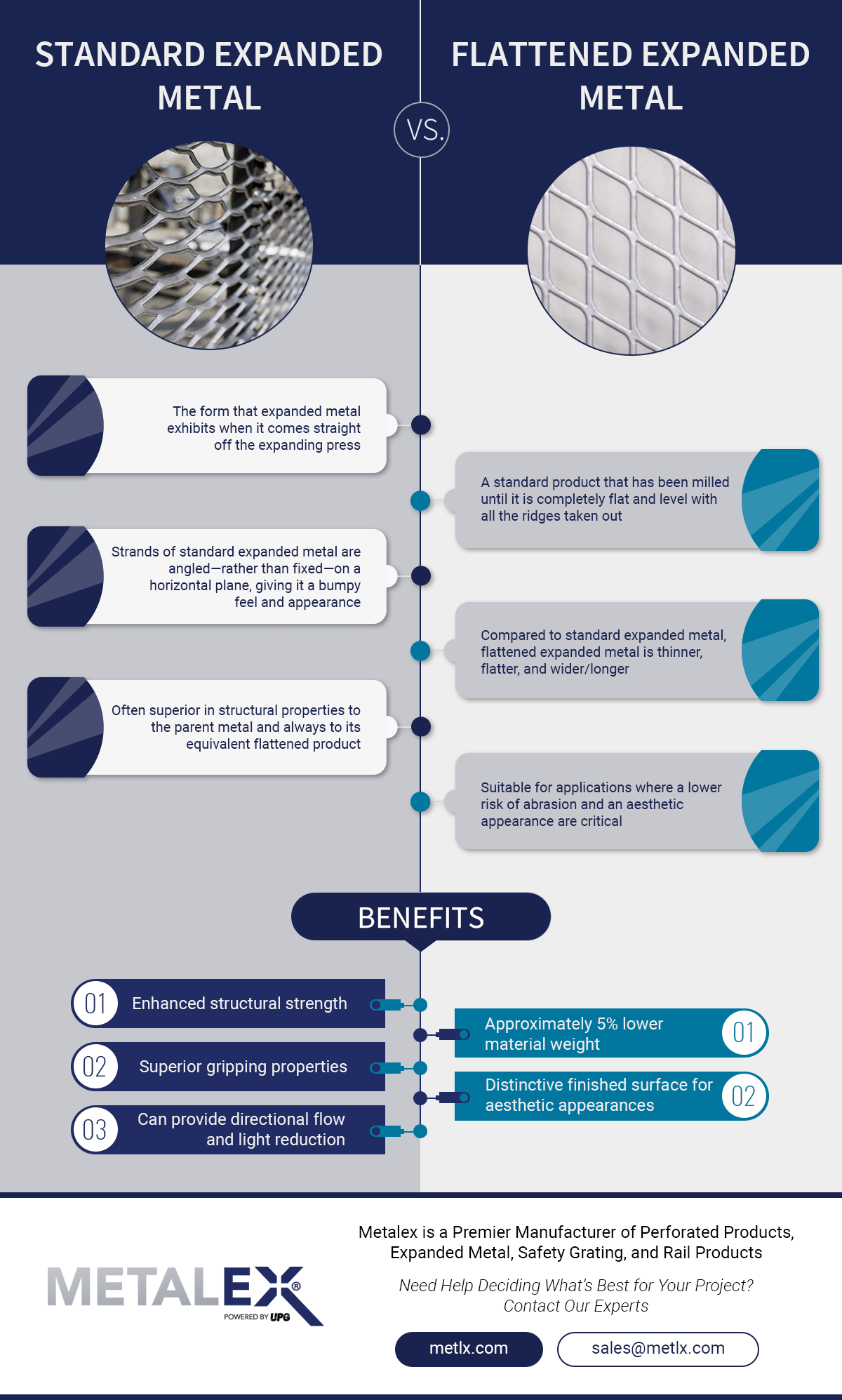
 For ventilation and drainage products,
For ventilation and drainage products, 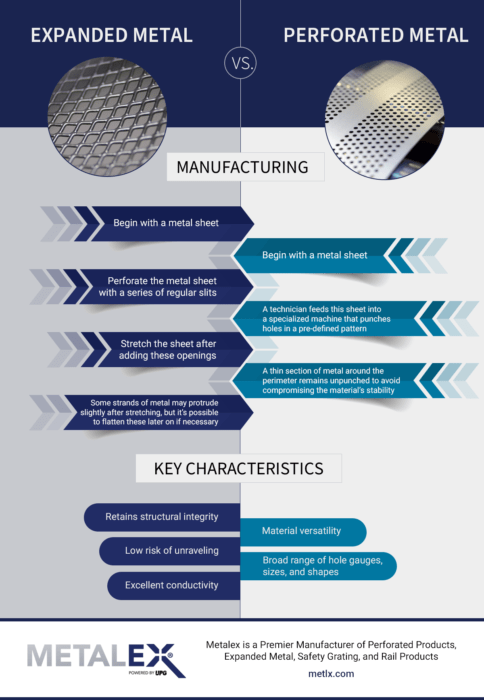

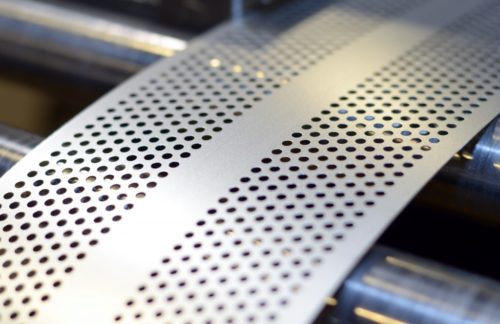 Metals have many inherent qualities, including strength, malleability, and durability, that make them ideal building components. Recently, architects and contractors have begun adopting new metal solutions to improve building performance, aesthetics, and safety. Two of the most common techniques, perforated and expanded metal, are particularly prized for their high strength, reliability, and flexibility, and their ability to provide high levels of security make them particularly beneficial for new or rehabbed buildings.
Metals have many inherent qualities, including strength, malleability, and durability, that make them ideal building components. Recently, architects and contractors have begun adopting new metal solutions to improve building performance, aesthetics, and safety. Two of the most common techniques, perforated and expanded metal, are particularly prized for their high strength, reliability, and flexibility, and their ability to provide high levels of security make them particularly beneficial for new or rehabbed buildings.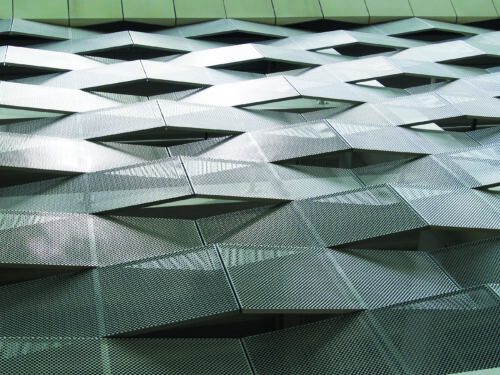 Security Mesh inside Walls, Ceilings, and Floors
Security Mesh inside Walls, Ceilings, and Floors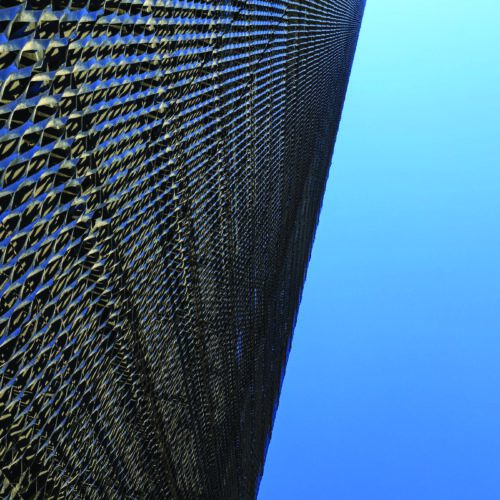 Making use of innovative new metal solutions allows for trade collaboration in the architectural industry. The large range of customization capabilities for perforated and expanded metals allows for a great deal of collaboration to take place between suppliers and clients. Because these metals can come in so many shapes, forms, and abilities, they offer limitless possibilities.
Making use of innovative new metal solutions allows for trade collaboration in the architectural industry. The large range of customization capabilities for perforated and expanded metals allows for a great deal of collaboration to take place between suppliers and clients. Because these metals can come in so many shapes, forms, and abilities, they offer limitless possibilities.